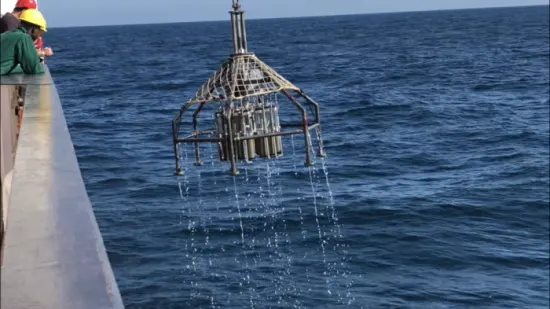
Why scientists are studying the huge amounts of soot in deep sea trenches
The deepest places on Earth are considered to be an overlooked sink of black carbon, marine scientists say.
Despite covering the majority of the planet, scientists have only been able to explore and chart five per cent of the oceans. This leaves a significant gap in our knowledge about one of the largest carbon sinks on Earth and how it is changing as the world above the water's surface rapidly warms.
Global oceans absorb about 31 per cent of all carbon dioxide emissions and new research indicates that significant amounts of carbon are accumulating at the bottom of deep sea trenches. The scientists say that their findings bring new knowledge about the role that trenches and other areas of the deep sea could play in moderating carbon dioxide in the atmosphere.

An illustration of an ocean trench and the Earth’s interior. (Creative Studio, Woods Hole Oceanographic Institution)
Researchers from the University of Southern Denmark developed and deployed underwater robots that can navigate through pitch-black waters and withstand the extreme pressures of the deep sea in order to gather data.
The researchers published three studies detailing how black carbon, also known as soot, has been found in large quantities at the bottom of oceanic trenches. Black carbon is released from burning fossil fuels and forests, which are the main sources of anthropogenic greenhouse gases.
See also: Our top climate stories that made us feel optimistic in 2022
Robots deployed near New Zealand, Australia, and Chile recovered higher black carbon levels from deep sea trenches, which the researchers hypothesize is due to winds transporting the pollutant out to sea. Alternatively, samples collected near forested regions of Papua New Guinea contained the lowest levels of black carbon.
The researchers estimate that 500,000 to 1.5 million tonnes of black carbon settle in the hadal deep sea each year, which is the seabed that exists at a depth of more than six kilometres. This is considered to be a significant proportion of the 6.6 million to 7.2 million tonnes of black carbon that are emitted from fossil fuel emissions each year.
“The hadal zone and the deep-sea trenches are overlooked reservoirs of stored carbon and thus represent a piece of the global carbon cycle and counteract the rate at which carbon dioxide accumulates in the atmosphere,” Ronnie N. Glud, head of the Danish Center for Hadal Research, said in a press release.
Watch below: What a rare “triple dip” La Niña means in a warming world
The research team has published several other studies about the vast amount of carbon stored in the seabed and estimates that every square metre in central regions of a deep-sea trench can bury 70 times more resilient carbon than other areas of the deep sea.
In addition to soot, plastic particles and other pollutants were found in deep sea trenches.
The researchers emphasize that humans should no longer assume dumping waste into the ocean is an “out of sight out of mind” matter and that important biochemical processes, even in the deepest parts of the sea, could have impacts on the Earth’s surface and atmosphere.
Thumbnail image: A multicorer is an instrument used to retrieve sediment from the bottom of the sea. (Anni Glud/ Danish Center for Hadal Research)












